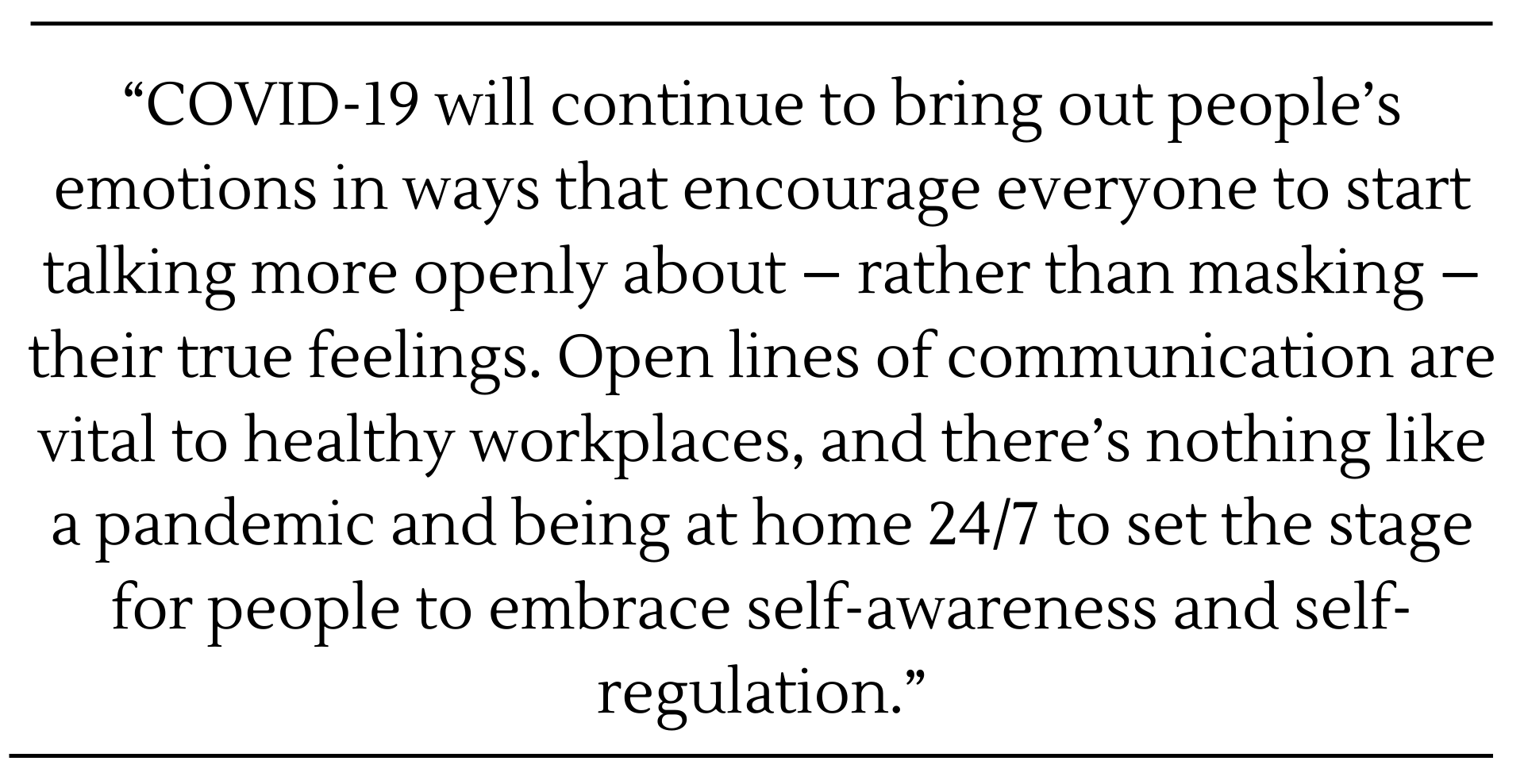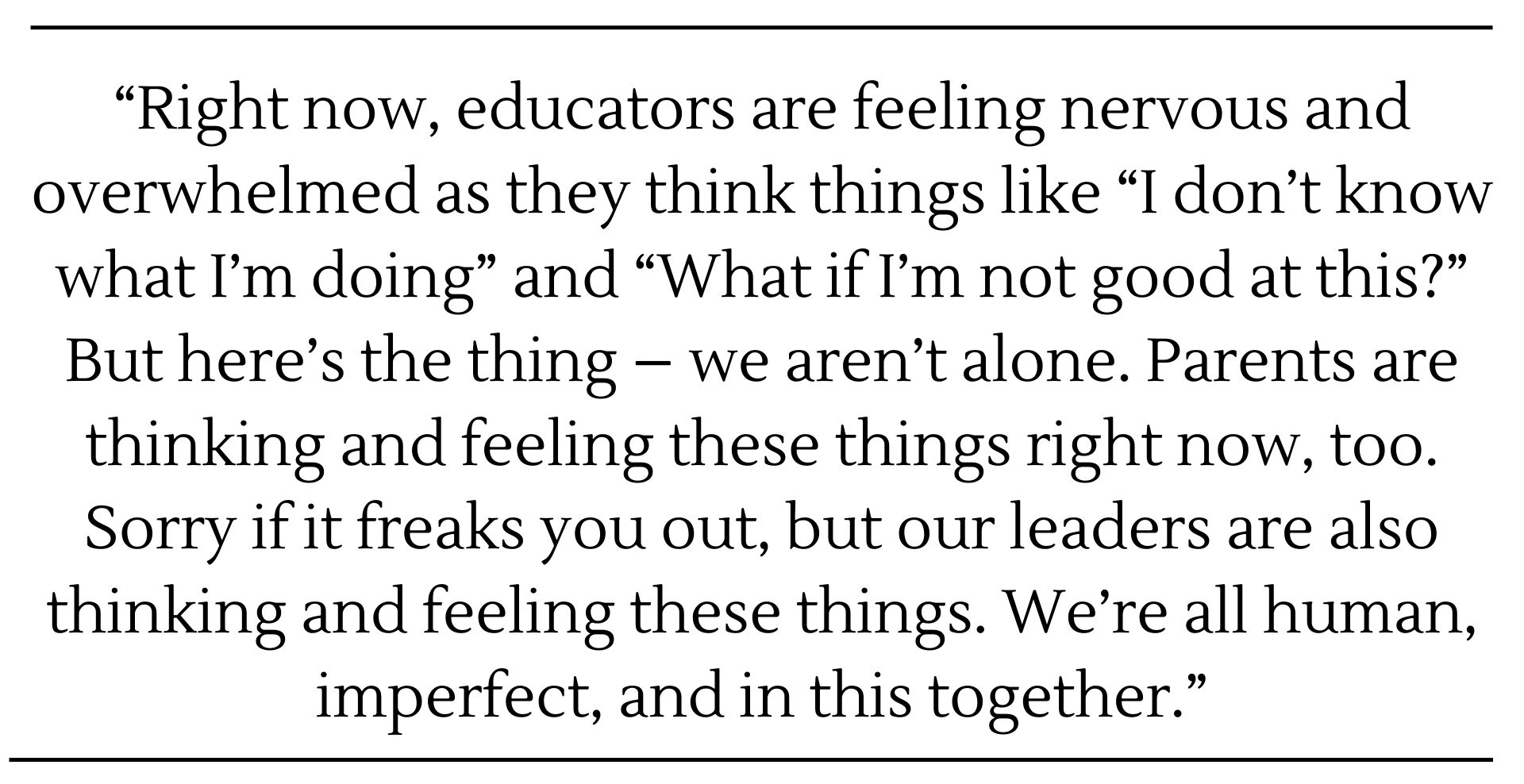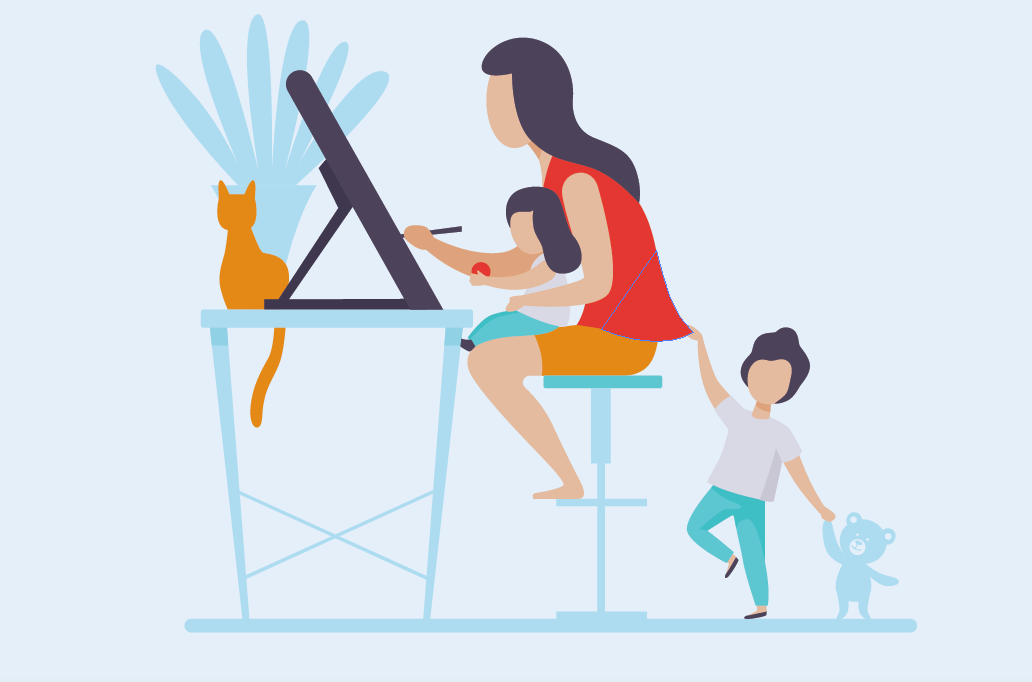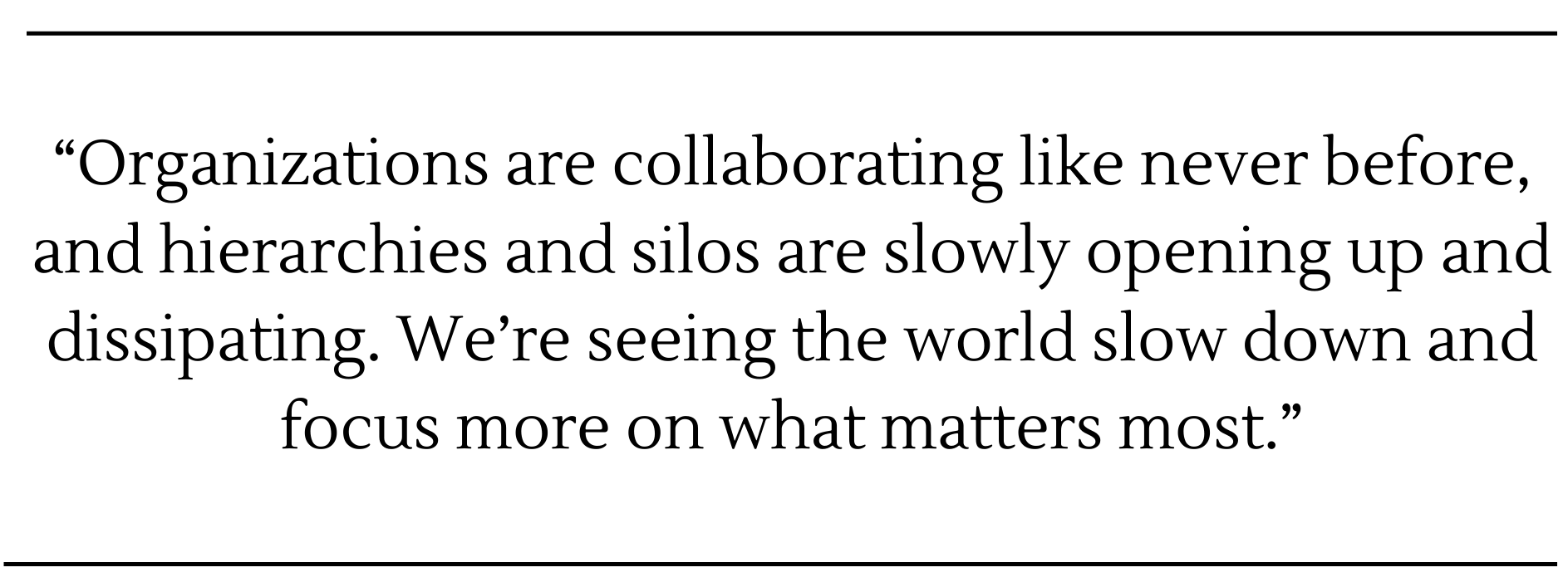COVID-19 and Workplace Well-Being in K-12 Education: Leaning into Connection, Belonging, and Opportunity in a Time of Crisis
Our brains and bodies are designed to see danger in the midst of worry and stress, but we must also recognize how COVID-19 is transforming our K-12 workplaces for the better
One of the things that I’ve learned from research is how important belonging and connection are to almost every measure of success in life. Without doubt, this pandemic is transporting our ability to connect into a wild spin. In some ways, we’re more apart now than we’ve ever been before as we practice physical distancing while remaining unable to connect in-person with our students, family members, and colleagues. It feels utterly strange that we can’t hang out with those closest to us as we put a halt on all of the normal, social things that we typically do instinctively.

Educators are missing their students, and students are likewise missing their friends and their educators, too. But both educators and students are a creative bunch who are finding ways to connect in spite of the current pandemic. We’re connecting online, we’re making videos, and entire staff teams are driving parade-like through neighbourhoods. Students are making signs at their window sills to greet passer-bys, and we’re gathering on balconies to make noise in praise of frontline healthcare workers every evening at 7:00 pm.

Through it all, we’re finding creative ways to show that we care. Whether that be through handwritten letters, telephone calls, or various online platforms, teachers and students are continuing to connect with those around them, and this ongoing care and connection has been heart-warming. One teacher had told me how nervous she was about experimenting with new ways of teaching as a result of the times that we’re in, but also of the empathetic words she received from parents who asked how she was doing and how they could support her. I can’t help but be immensely proud of each and every educator, including our education leaders, for prioritizing connection and belonging in this era of physical distancing.
COVID-19 IS FORCING US TO UP OUR GAME IN THE AREA OF K-12 WORKPLACE WELL-BEING.
Before COVID-19, society in general and education systems in particular were on paths towards acknowledging the importance of social emotional health in schools. K-12 staff were busily working on reducing stigma around mental illness, teaching about mental health, and acknowledging that schools have a big part to play in this area. Staff were also spreading the message that investing in K-12 workplace well-being is tremendously important in light of increasing levels of employee stress and burnout. If anything, this pandemic is forcing us to up our game. COVID-19 will continue to bring out people’s emotions in ways that encourage everyone to start talking more openly about – rather than masking – their true feelings. Open lines of communication are vital to healthy workplaces, and there’s nothing like a pandemic and being at home 24/7 to set the stage for people to embrace self-awareness and self-regulation.

Of course, there are people who will continue to avoid their feelings while pretending that they’re “fine” or “doing great” all the time, but here’s a tip for you: those people are either lying about their feelings or numbing, pretending, and protecting their pain in ways that are bound to break down sooner or later. We’re emotional beings and it’s okay to feel negative emotions. Remember that feelings are completely natural, so let’s stop fighting them and instead meet them with curiosity, courage, and compassion when they surface. Right now, educators are feeling nervous and overwhelmed as they think things like “I don’t know what I’m doing” and “What if I’m not good at this?” But here’s the thing – we aren’t alone. Parents are thinking and feeling these things right now, too. Sorry if it freaks you out, but our leaders are also thinking and feeling these things. We’re all human, imperfect, and in this together.

So many educators are trying to figure out how to get work done and be a parent at the same time. There are so many questions without easy answers, such as:
- “How can I teach a class with a toddler running in and out of the room or crying in the background?”
- “What about my own school-age children – how can I support their learning while simultaneously teaching my students online?”
- “What about my elderly parents?”
- “What about getting groceries?”
- “What about my spouse who is busily working?”
- “What about my spouse who has just been laid off?”
The fact is that these times can be messy and imperfect – and that’s okay.
LET’S CHOOSE TO SEE COVID-19 NOT ONLY FOR ITS CHALLENGES BUT ALSO THE OPPORTUNITIES IT PRESENTS FOR EDUCATORS.
If we notice, name, and are curious about these feelings, then we’ll be much better positioned to regulate our feelings and choose how we react. Although our brains and bodies are designed to see danger in the midst of worry and stress, we must also recognize the good that has transpired through the COVID-19 pandemic. Right now, we might be feeling fearful (it really is okay to admit this), but we might also be feeling inspired, compassionate and, heck, even brave and resilient. These positive feelings are so good to talk about, too.

New methods of learning are forcing us and perhaps even inspiring us to transition slowly and gently into the most important parts of teaching and learning. For some time now, educators have been wanting to prioritize core skills like communication, thinking, creativity, and social connection over classroom content. Educators have wanted to emphasize flexible and creative project learning over textbooks and worksheets. Indeed, the current situation we find ourselves in presents opportunity to do exactly these things!
THE TAKEAWAY: IN THE CHAOS OF OUR EMOTIONS, LET’S LEAN INTO COMMUNITY AND OUR RELATIONSHIPS.
I know it’s probably too soon to be envisioning a post-COVID-19 world, but we’re already seeing more connection, relationship, and compassion grow from this situation. Organizations are collaborating like never before, and hierarchies and silos are slowly opening up and dissipating. We’re seeing the world slow down and focus more on what matters most.

Surely there will be challenges in the upcoming days, weeks, and even months, inevitably leading to all kinds of emotions, thoughts, and behaviours. But I know that we’ll get through this because, like we tell our kids at home and in the classroom, “We can do hard things.” We will also experience positive emotions, thoughts, and behaviours. When that happens, lean into those moments and enjoy them for as long as you can. Remember that the roller coaster ride may go on for a while, but you’re not riding alone. Physically apart, maybe, but certainly not alone. We got this!
Photos: Adobe Stock
